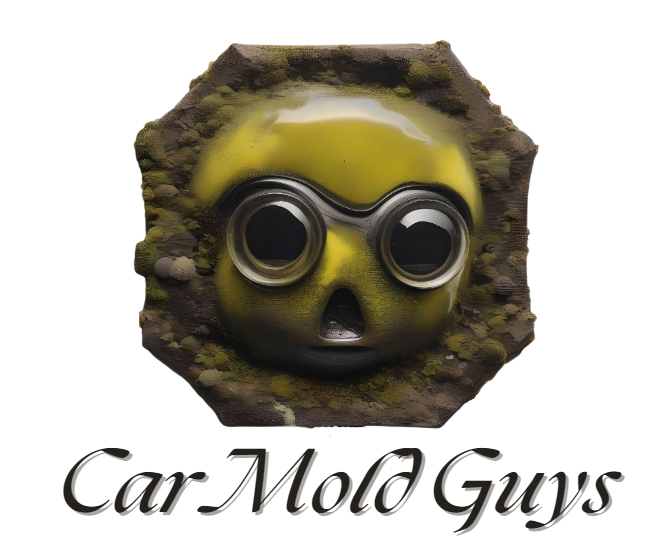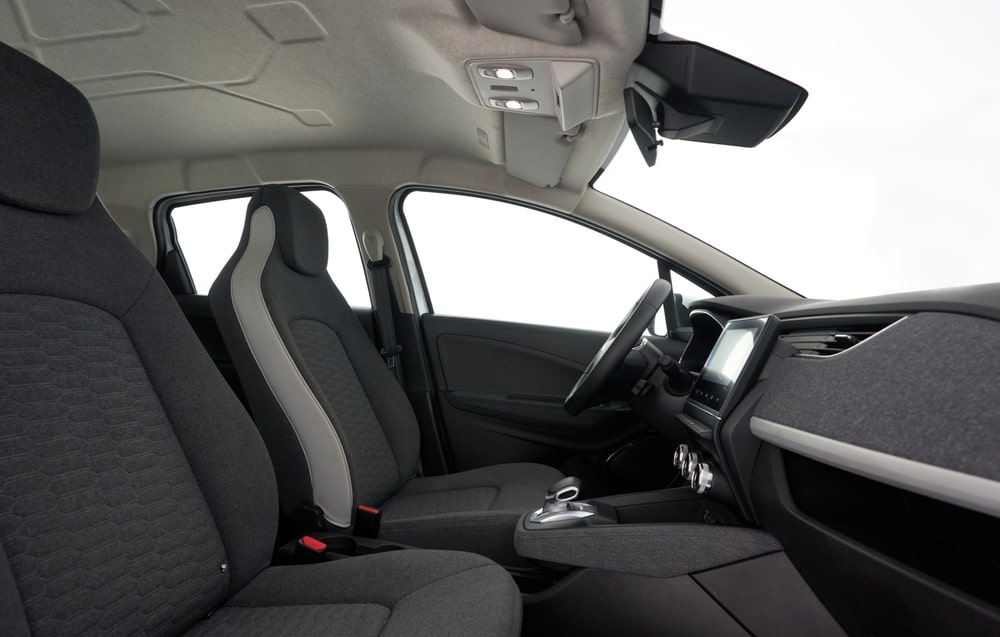Can there be mold in the car that I can’t see?
Yes, mold can grow in areas of your car that are not immediately visible. Mold tends to thrive in dark, damp, and poorly ventilated spaces, which can exist in various hidden parts of a vehicle.
Pets and kids can inadvertently create conditions that promote the growth of hidden mold in cars. Understanding how this happens can help you take proactive measures to prevent mold issues.
Hidden Areas Prone to Mold Growth
Under the Carpets and Floor Mats:
- Moisture Accumulation: Water can seep under the carpets and floor mats from wet shoes, spills, or leaks, creating a perfect environment for mold.
- Condensation: Humidity and condensation can also cause moisture to accumulate in these areas.
- Inside the HVAC System:
- Air Ducts and Vents: Mold can grow inside the car’s heating, ventilation, and air conditioning (HVAC) system, particularly in the ducts and vents where moisture can accumulate.
- Evaporator Coil: The evaporator coil can become a breeding ground for mold due to condensation.
- Under Seats and in Seat Cushions:
- Absorbed Moisture: Seats, especially fabric ones, can absorb moisture and, if not dried properly, can develop mold within the cushions or under the seats.
- Spills and Leaks: Spilled liquids or leaks from windows or the sunroof can lead to mold growth in these areas.
- In the Trunk:
- Trapped Moisture: The trunk is another area where moisture can become trapped, especially if the trunk seal is damaged or if wet items are stored there.
- Condensation: Similar to the interior cabin, humidity and condensation can lead to mold growth.
- Behind Panels and Linings.
- Door Panels: Moisture can get trapped behind door panels, especially if the weatherstripping is compromised.
- Roof Lining: The roof lining can also harbor mold if there are leaks from the sunroof or if the vehicle has been exposed to excessive moisture.
How Pets and Kids Contribute to Hidden Mold in Cars
Increased Moisture Levels
- Spills and Accidents: Children often spill drinks and snacks, and pets can have accidents in the car. These spills, if not cleaned promptly and thoroughly, can seep into the carpets and upholstery, creating a damp environment conducive to mold growth.
- Wet Items: Wet clothes, shoes, pet blankets, or towels can introduce moisture into the car. Pets can also bring in moisture after a walk in the rain or playing in water, while kids might bring in wet items from sports activities or rainy weather.
Organic Material
- Food Crumbs and Debris: Kids often leave behind crumbs and food wrappers, while pets can shed fur and dander. These organic materials can serve as a food source for mold, encouraging its growth.
- Pet Hair and Dander: Pet hair can trap moisture and provide a surface for mold spores to attach to. Dander, the microscopic skin flakes pets shed, can also contribute to mold proliferation.
Poor Ventilation
- Closed Windows: For safety reasons, windows are often kept closed when kids and pets are in the car, which can reduce ventilation and increase humidity levels inside the vehicle.
- Infrequent Cleaning: Cars with frequent pet and kid passengers might not be cleaned as often or as thoroughly as needed, allowing mold-friendly conditions to develop.
Signs of Hidden Mold
- Musty Odor:
- A persistent musty or moldy smell in the car, even if you can’t see any mold, is a strong indicator of hidden mold growth.
- Allergic Reactions:
- Experiencing allergic reactions such as sneezing, coughing, itchy eyes, or respiratory issues when inside the car can indicate the presence of mold.
- Condensation:
- Excessive condensation on windows, especially when the car has not been used, can be a sign of high humidity levels conducive to mold growth.
- Water Stains or Dampness:
- Visible water stains, dampness, or wet spots on carpets, seats, or the trunk lining can indicate a moisture problem that may lead to mold growth.
Addressing Hidden Mold
- Identify the Source:
- Visual Inspection: Look for visible signs of mold, such as discoloration, spots, or stains on carpets, upholstery, and interior panels.
- Smell Test: A musty odor is a strong indicator of mold. If your car smells moldy, investigate further to find the source.
- Deep Cleaning:
- Remove and Clean Carpets and Mats: Take out all removable carpets and mats. Clean them thoroughly with a mold-killing solution.
- Clean Upholstery: Use a steam cleaner or upholstery cleaner with anti-mold properties. Make sure the interior is thoroughly dried afterward.
- Disinfect Hard Surfaces: Wipe down all hard surfaces, including the dashboard, door panels, and center console, with a mixture of water and white vinegar or a commercial mold cleaner.
- Professional Help:
- Mold Remediation Specialists: If the mold problem is extensive or persistent, consider hiring a professional mold remediation service. They have the tools and expertise to address hidden mold effectively.
- Automotive Detailing Services: Some detailing services specialize in mold removal and can provide a thorough cleaning of your car’s interior.
Preventive Measures to Mitigate Mold Risk
Preventing Hidden Mold For Pets
- Pet Covers and Mats: Use waterproof pet covers and mats to protect the car seats and floor from moisture and pet hair.
- Regular Grooming: Keep your pets well-groomed to reduce the amount of hair and dander they shed in the car.
- Dry Pets Before Entry: Dry your pets thoroughly with a towel after walks in the rain or swimming before allowing them back into the car.
- Frequent Cleaning: Vacuum the car regularly to remove pet hair and dander. Use a pet hair remover tool for thorough cleaning. For Kids
- Spill-Proof Containers: Use spill-proof cups and containers for snacks and drinks to minimize spills.
- Clean Up Immediately: Clean up any spills or messes as soon as they occur to prevent moisture from seeping into the car’s fabrics.
- Remove Wet Items: Ensure that wet clothing, shoes, and sports gear are not left in the car for extended periods.
Maintenance Measures
- Regular Inspection and Cleaning:
- Thorough Cleaning: Regularly clean and vacuum the car’s interior, paying special attention to areas under seats and carpets.
- Check for Leaks: Inspect seals around windows, doors, and the sunroof for leaks. Repair any damaged seals promptly.
- Apply Protective Coatings: Consider applying anti-mold coatings to carpets and upholstery as a preventive measure.
- Moisture Control:
- Monitor for Moisture: Use moisture detectors to regularly check for hidden moisture in the car. Address any signs of moisture immediately.
- Dehumidifiers: Use car dehumidifiers or moisture absorbers to keep humidity levels low.
- Dry Wet Areas: Promptly dry any wet areas or spills to prevent moisture from accumulating.
- Ventilation:
- Air Out the Car: Regularly ventilate the car by opening windows and doors, especially after driving in wet conditions or after cleaning.
- Use the HVAC System: Use the HVAC system to circulate air and reduce humidity levels inside the car.
- Professional Help:
- Mold Remediation Services: If you suspect hidden mold and cannot locate or remove it yourself, consider hiring professional mold remediation services. They have the tools and expertise to thoroughly clean and treat mold in all areas of the vehicle.
Conclusion
Hidden mold in a car can pose serious health risks and compromise the air quality inside the vehicle. Regular inspection, cleaning, and moisture control are essential to prevent mold growth. If you detect signs of hidden mold, such as musty odors or allergic reactions, taking prompt action to address the issue can help maintain a healthy and safe environment in your car.
Pets and kids can inadvertently contribute to hidden mold in cars by increasing moisture levels and introducing organic materials that mold can feed on. Regular cleaning, proper maintenance, and taking preventive measures can significantly reduce the risk of mold growth. Ensuring your car is clean and dry will help maintain a healthy environment for both your passengers and your vehicle.

